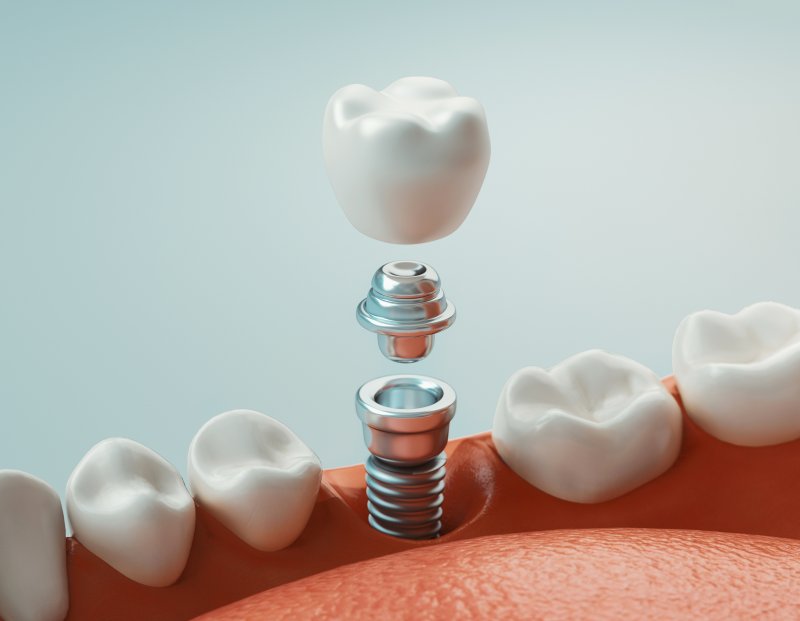
Whether you’ve met with your implant dentist for your initial consultation, you may feel overwhelmed by some of the information. The dental implant terms commonly used in articles or among dental professionals are likely to cause some confusion and uncertainty, so if you want to feel more confident the next time you arrive for an appointment, keep reading to learn what these words mean. This way, you won’t be left in the dark.
Abutment
The abutment is the small connector piece that is attached to the top of your dental implant. Commonly made of metal, it is used to help hold the restoration in place, no matter if you receive a custom crown, bridge, or denture.
Implant
An implant or “dental implant” is a prosthetic device that fits within the jawbone and fuses to create a solid base for your new smile. It looks like a small screw and offers optimal stability and support once it is firmly in place. Most implants can last throughout your life, making them a preferred tooth replacement solution for patients who want to avoid regular replacements, adjustments, and messy denture adhesives.
Osseointegration
Osseointegration is a process that can take 3-6 months to complete. Once your dental implants are positioned by a trusted professional, they will need to fuse with your jawbone. This is what is known as osseointegration. The stronger bond between the bone and implant allows for a sturdy and longer-lasting set of teeth.
Titanium
Titanium is the most common material used to create dental implant posts. Its ability to fuse with the jawbone is attractive to dentists, but it is also a great option for those who are allergic to other types of metal. Titanium is also lightweight and durable, so you don’t need to worry about it causing a heavy feeling inside your mouth.
Zirconia
Zirconia is an alternative option to titanium, especially for those who may be allergic. Many holistic dentists use zirconia implants because there are no connector pieces, and the potential for bacterial accumulation is much less than with titanium. Also, instead of these posts being made of metal, they are white, so they blend in nicely with your existing smile.
Abutment Teeth
Abutment teeth are those commonly used to anchor a dental bridge or partial denture. While dental implants do not need abutment teeth, it can be helpful to know what they are, as traditional tooth replacements use them to ensure a secure fit. The crowns of a dental bridge fit over these teeth, and the metal clasps of a partial denture attach to them.
Now that you’ve brushed up on your dental implant terminology, you can walk into your next appointment feeling more confident about what your dentist is saying concerning your treatment.
About the Author
Dr. Zelia Cannon’s high-quality service and results stem from spending 30 years in the field of dentistry. Fascinated by the profession, she grew up surrounded by orthodontists in her family and spent much of her time working in the dental office. As one of two dental professionals at Gentle Dentistry Sparta, she is pleased to work closely with patients and local implant experts to deliver one-of-a-kind solutions – those designed to fill in gaps and transform the function, aesthetics, and health of a person’s smile by using dental implants. If you want to replace your missing teeth with a permanent solution, contact us at (973) 729-9044.
